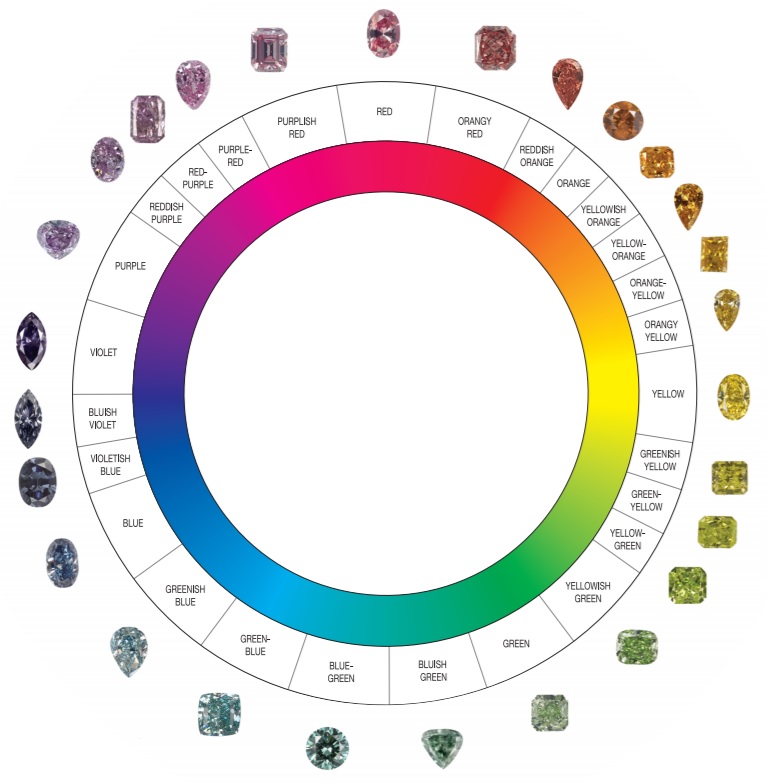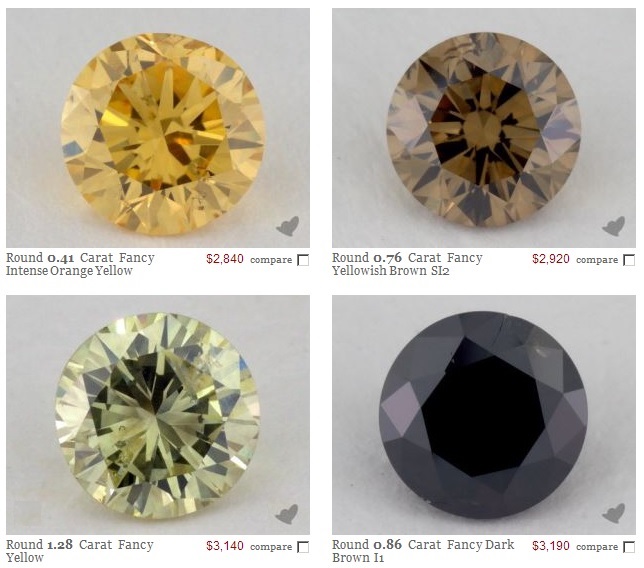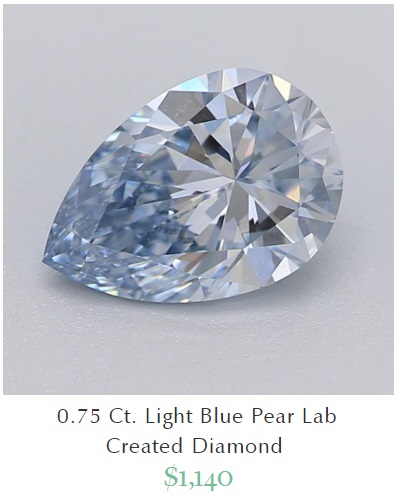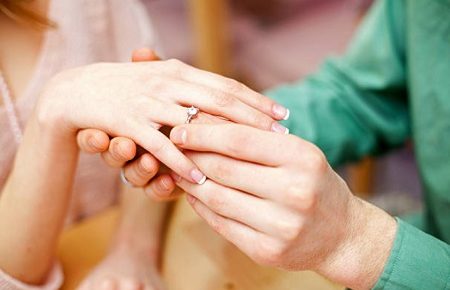What Happens to Diamonds Graded Outside the D-Z Scale?

GIA color scale showing diamonds from D to Z. What happens to colors outside the scale?
The GIA color grading scale lies in a range of D-Z; with D being colorless and Z being lightly colored. For most consumers, the range of diamond jewelry you will typically come across and buy will be between D and K.
But, have you ever wondered what lies beyond a Z grade?
If you are thinking about fancy colored diamonds, you are absolutely right. Once the color saturation of a diamond goes beyond the Z grade, we enter into a realm of fancy colored diamonds. This is where the primary color hue and shade of a diamond will determine its rarity and value.
GIA’s Fancy Color Grading System – A Quick Intro
The fancy color grading system doesn’t utilize a number or letter for color representation. Instead, this system uses words that describe the tone, saturation and the type of hue the diamond gives off.
As an example, the face-up color appearance could be described as light blue or fancy brown. It is also possible for a diamond to have hues made up of a combination of colors, such as; bluish-green, reddish-orange and fancy dark orangy brown.
In total, GIA recognizes 27 different hues of color for grading diamonds and each of these hues represent a range of different colors. Here’s the official color wheel that GIA uses when grading fancy color diamonds.

For diamonds beyond the D-Z scale, their appearance comes from a combined effect of hue, tone and saturation. GIA would use the following grades to identify a range of color appearance:
- Faint
- Very Light
- Light
- Fancy Light
- Fancy
- Fancy Intense
- Fancy Dark
- Fancy Deep
- Fancy Vivid
These grades are used in conjunction with the diamond’s color (e.g. red, pink, yellow) to describe its appearance. Obviously, the stronger the hue, the more valuable the diamond becomes.
Interested to Buy a Fancy Colored Diamond?

Which color appeals most to you? Browse the full range of fancy color diamonds at JamesAllen.com!
It is estimated that only 1 out of every 10,000 mined roughs is fancy colored. For sporadic colors like blue or pink, the rarity of such stones could be as high as 1 out of 24,000 roughs!
This is the reason why colored diamonds command high auction prices and continue hitting record prices year after year.
Depending on the hue and color intensity a diamond has, the value can either be increased or decreased.
As a rule of the thumb, any color mixed with brown will usually see a decrease in value. For example, a fancy brownish pink is a lot less valuable than a fancy intense pink diamond. Some color hues like red or blue are much rarer than others like yellow and brown.
So, don’t be surprised when you see a pink diamond being 10 times more expensive compared to a yellow diamond.
Prices Are Ridiculously High! Are There Alternatives?
Natural fancy colored diamonds often have astronomical prices pegged to them and are out of reach to most people. However, artificial processes like heat treatments and irradiation have made it possible for people to own a fancy colored diamond at affordable prices.
So, if somebody is listing a 1 carat blue diamond ring for sale at $6,000, you can bet that the stone has undergone enhancement processes and that the color didn’t come naturally.
That said, there’s nothing wrong in buying a treated diamond. However, you do need to know that some of these treatments could be permanent while some others are only temporary measures. Also, treated diamonds often require special handling and care to maintain their appearances.
Personally, I would recommend fancy color lab grown diamonds instead as they tend to be better quality and at better price points. Here are a couple of beautiful lab grown stones from Brilliant Earth.
Compared to their natural counterparts, these diamonds are much more affordable! If you love colored diamonds and don’t have the budget for them, you may want to consider a lab created diamond instead.
What Really Matters Most When You Select a Color?
While D colored diamonds are largely sought after by consumers and investors, there are people who may prefer diamonds with lower color grades as they look warmer and generate a different kind of feel.
At the end of the day, the choice of color should always be one that you will enjoy looking at.
A brown diamond that looks unappealing to another person might be love at first sight for you. As the saying goes, one man’s meat is another man’s poison. Your personal preference is what matters and not what someone else thinks or says.
As an Asian, I personally love colorless diamonds (D-G range) that face up cool, icy white. However, there are many readers in the Western world who are perfectly fine with I, J, K graded diamonds.
When it comes to fancy colored diamonds, it’s the same philosophy. I may personally love pink diamonds because of their symbolic connotations but someone else may prefer a fancy yellow diamond for its bright looking color!
Let’s Sum Things Up!

To wrap things up, it’s important that you purchase a diamond for a visual appeal that you like and not just for the grade specified on a piece of paper. This is especially true when it comes to fancy colored diamonds.
No two diamonds with the same color grading will look exactly alike. The best way to shop is to look around at the available options (via videos or in person) and discover your own preferences.
















Leave A Comment